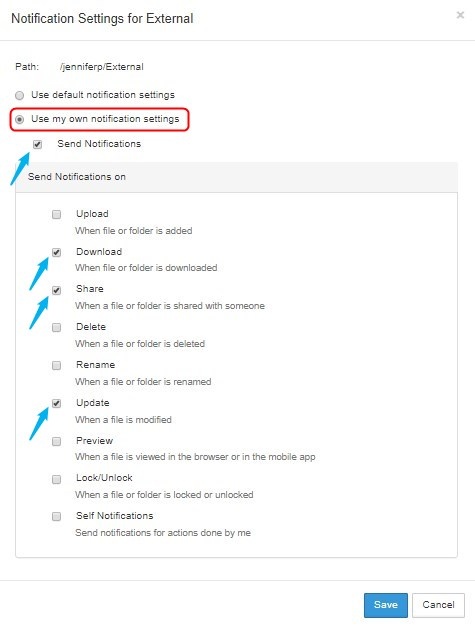If you are permitted to to override your administrator's default settings, you can specify which actions you are notified about for specific files and folders. The notifications tell you when other users that have access to the file or folder (either because they own it or you or another user has shared it with them) perform an action on it. You can also notify yourself when you perform an action on the file or folder.
On this page:
Select the file or folder and either right-click it or click More in the toolbar:
|
|

To receive notifications of your own actions, check the last checkbox, Self Notifications.
If you do not check Self Notifications, you only receive notifications when a user you have shared a file with performs an action on that file. If you do check Self Notifications, you also receive a notification when you perform an action on a file you own or a file that has been shared with yo |
The notification settings which take top priority are those you set on the specific file or folder that you are working on. The order of priority for notifications from top to bottom is: